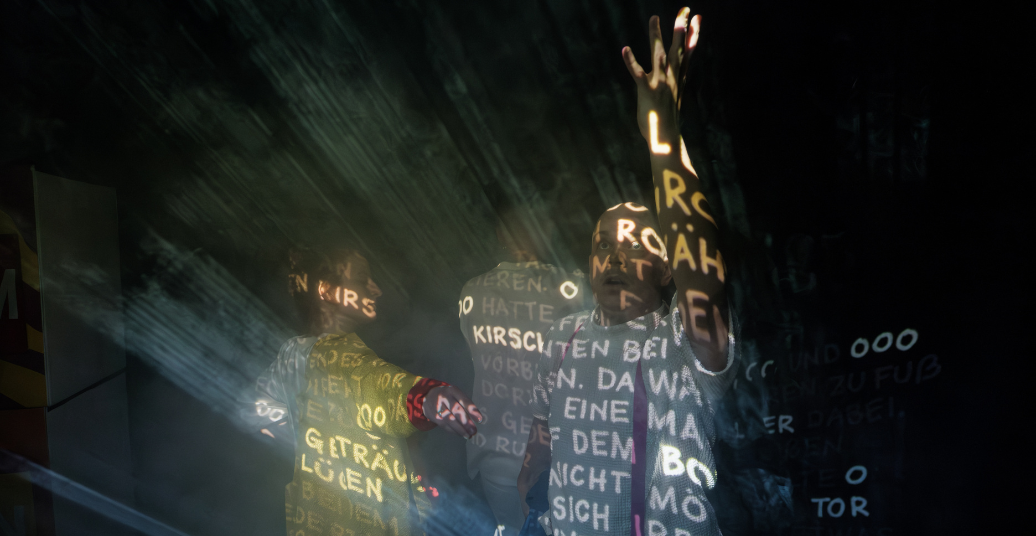O (die shOw), choreographed and performed by Jan Kress, Jan Rozman and Julia Keren Turbahn, is a dance performance for both Deaf and hearing audiences from age six and up. It premiered at FELD Theater für junges Publikum on 14 February 2024 with further performances until 18 February.
The theatre is filled with children and chatters! Chit chat chit chit chatty of children to an overwhelming degree. All children seem to be between the ages of six to eight and most of them are hearing; the only Deaf children in the audience are seated in the first row. Throughout the performance, I realise once again how a majority of children constantly express through words and sounds what they see, feel and think. As an extremely non-verbal and quiet child with high sensitivity to sound, I remember that word-oriented communication alienated me. Sitting in the theatre, I wonder if Deaf children sometimes feel estranged from and exhausted by mainstream society. In O (die shOw), however, the Deaf children become the insiders.
The performance opens with the three performers, Jan Kress (a Deaf performer, in a pair of blue sneakers), Jan Rozman and Julia Keren Turbahn (hearing performers, in pairs of red sneakers), explaining in spoken word and German sign language (DGS) a story of three characters, O, Oo and Ooooo. One day, Ooooo saw a big, odd, shiny and magical hole on the ground. O and Oo thought that Ooooo must have been dreaming or was lying. They got into a big fight about it, until…
A round pool of light appears on the floor and the audience is whisked into the world of O, where stories are told visually through moving bodies, lights and props. The performers jump into the hole and the stage goes dark. Some children shriek with excitement when blue lights fill the stage and Kress expresses the adventure of O, Oo and Ooooo in Visual Vernacular. This scene follows with the performers interacting with the mysterious O, continuously transforming its size and identity: a frisbee, a hula hoop, a pan, a ring…
Each time a new coloured hole appears on the floor, the performers jump in, taking us to a different world, where every world presents a game that we all play together. The games centre on visual language and introduce DGS alphabets and words to hearing audience members. When the performers jump into a pink hole and arrive at the third and final world, they engage in an extensive exchange through movements and facial expressions. Since their dance is fast and complex, it is difficult to immediately understand their meanings, although their interactions make it clear that they are absorbed in conversation. Witnessing this scene, the hearing children voice their restlessness and frustration. “I don’t understand sign language,” says one child. “This is not sign language,” says an adult. Other children guess out loud what this scene could be about. This moment, for me, flips the “common” scenario of Deaf children being left out of a conversation on its head; the hearing children are the ones being challenged.
A magical hole opens inside of me. Am I really allowed to jump in at any time and disappear into my preferred way of dialogue? wOOOw! Hey, are you frowning because you don’t understand? Then, I would like to ask you: Have you seen the story of O? No, I wasn’t dreaming! It was reeeeaaal.
O (die shOw), choreographed and performed by Jan Kress, Jan Rozman and Julia Keren Turbahn premiered at FELD Theater für junges Publikum on 14 February 2024 with further performances until 18 February.




